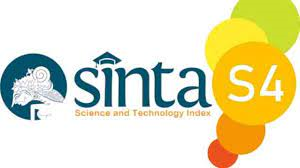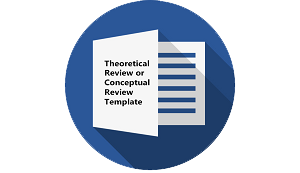An Analysis of Imperative Sentence in “Uang Panai†Movie
DOI:
https://doi.org/10.30957/ijoltl.v4i3.609Keywords:
Imperative Sentence, BugiseAbstract
This study aimed to analyze the type and function of the Imperative sentence that appeared in “Uang Panai†Movie. The researcher applied content analysis design. The subject of this study is the characters in “Uang Panai†Movie. And the object of study was imperative sentences used by the characters in the movie. The instrument used in this study was the checklist. The researcher found 98 positive imperative sentences and 30 Negative imperative sentences. The particles used in a positive imperative sentence in Bugise Language found in Uang Panai Movie mostly the character used particle to stress the command and also the researcher found that in Bugise imperative there are using Ko and Ki to represent you but Ki is more polite than using ko. The researcher also found 83 imperative sentences as command with the most particle used is to give emphasis to the listener to do something, 14 imperative sentence as a request with the most marker used is marker ki to represent politeness and word “tolong†and 30 imperative sentence as a prohibition used word “jangan†with mostly marker used is ko to give more stress to the listener for not to do something.
Downloads
References
Arbain Akhmad Taufik, Truong Thi Nhu Ngoc, D. R. N. (2017). Basic English Drill. https://books.google.co.id/books?id=aLNF.
Arbain Akhmad Taufik, D. R. N. (2017). Daily English Phrases Book. Cerita di Balik Kesuksesan Uang Panai', Film Lokal Pertama Masuk Box Office Indonesia - Tribun Timur.
Creswell, J. W. (2012). Educational Research: Planning, Cinducting and Evaluating Quantitative and Qualitative Research. University of Nebraska–Lincoln Boston (Vol. 4).
Creswell, J. W. (2014). Research Design: Qualitative, Quantitative, and Mixed Methods Approaches — 4th ed. University of Nebraska-Lincoln.
Fitri Sudjirman. (2016). Politeness Strategies Used by Makassar Bugise Lecturers in
English Language Teaching graduate Program Hanan, S. (2015). Berkenalan Dengan Dialek Melayu Makassar (p. 78). Yogyakarta: Penerbit Ombak.
Hornby. (1976). A guide and patter and usage in English.
Karepouwan. (2013). Imperative Sentence in Novel The Kill Order, 12.
Macknight, C. C. (2012). Bugis and Makasar: two short grammars. South Sulawesi Studies 1. Mantasiah, R. (2017). Sintaksis Bahasa Makassar. Tinjauan Transformasi Generatif(p. 94). Sleman: CV Budi Utama.
Matthew B. Miles & A. Michael Huberman & Jhonny Saldana. (2014). Matthew B. Miles & A. Michael Huberman & Jhonny Saldana. Library of Congress Cataloging-in-Publication Data Miles, (Vol. 3). SAGE Publications, Inc.
Nurpahmi, S. (2018). Difficulties Encountered By the Buginese Learners in Producing English Sounds. Lentera Pendidikan : Jurnal Ilmu Tarbiyah Dan Keguruan, 16(1), 83–90. https://doi.org/10.24252/lp.2013v16n1a7 Nordquist, R. (2019). How Do You Define a Sentence?. Retrieved 1 September 2019, from https://www.thoughtco.com/sentence-grammar-1692087
Rijal, S. (2014). Kalimat Imperatif Bahasa Massenrempulu, 20(3), 395–401.
Septian Dwi Hardika. (2014). An analysis of Imperative Sentence of Iron Man 3 Movie and Their Subtittling, School of teacher and training education.
Silvia Erlin and Nike Andayani. (2015). An analysios of imperative Sentence on Medicine product. Literary Criticism Journal Vol. 2 No. 2 – Juni 2015, 71, 219–236. Retrieved from http://www.riss.kr/link?id=A100969944
Simorangkir, M. (2016). The imperative Senetnce in Doloksanggul Toba Batak language, 2, 41–53. TribunMakassar (2016). Retrieved 1 September 2019, from https://makassar.tribunnews.com/2017/03/12/cerita-di-balik-kesuksesan-uang-panai-film-lokal-pertama-masuk-box-office-indonesia
Weda, S. (2017). Syntactic Variation of Makassarese, a Member of the South Sulawesi Group of Language in Austronesian Great Family, Classroom Language Assessment. PEOPLE: International Journal of Social Sciences, 3(1), 01-13. https://doi.org/10.20319/pijss.2017.31.0113
Wulandari, D. A. (2009). Transformers: Revenge of the Fallen, 39. https://doi.org/10.1145/1665208.1665235
Downloads
Published
How to Cite
Issue
Section
License
Authors who publish with this journal agree to the following terms:
- Authors retain copyright and grant the journal right of first publication with the work simultaneously licensed under a Creative Commons Attribution-ShareAlike 4.0 International License that allows others to share the work with an acknowledgement of the work's authorship and initial publication in this journal.
- Authors are able to enter into separate, additional contractual arrangements for the non-exclusive distribution of the journal's published version of the work (e.g., post it to an institutional repository or publish it in a book), with an acknowledgement of its initial publication in this journal.
- Authors are permitted and encouraged to post their work online (e.g., in institutional repositories or on their website) prior to and during the submission process, as it can lead to productive exchanges, as well as earlier and greater citation of published work (See The Effect of Open Access).












